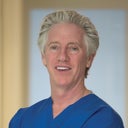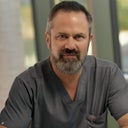Posted underFacial Fat Transfer q&a
How soon after Fat Transfer (to the face) is it safe to use facial muscles again (to chew, talk, smile, etc.)?
Male, aged 36. I am thin, so I’ve had substantial volume loss. I want fat transferred to nasolabials, teartroughs, upper and lower cheeks, and a bit in temples and glabella. I’ve read that using facial muscles as little as possible after the procedure is paramount to proper neovascularization of the lipocytes, and so diet needs to be soft and talking/laughing kept to a minimum. When will I be able to safely talk, emote, yawn and eat in a normal manner? How about brushing teeth? Thank you.
Answers (11)
From board-certified doctors and trusted medical professionals

Dr. John J. Martin, Jr., MD
Oculoplastic Surgeon, Board Certified in Ophthalmology
Answer

Dr. Jason Emer, MD
Dermatologic Surgeon, Board Certified in Dermatology
Answer
Dr. Frederic H. Corbin, MD (license restricted)
Board Certified Plastic Surgeon
Answer
More Facial Fat Transfer Questions
See all Facial Fat Transfer Q&AWE SEND PRETTY
EMAILS
What’s trending? Who’s turning heads? Which TikTok myths need busting? We’ve got you. No fluff, no gatekeeping—just real talk. Get our free, unfiltered newsletter.






